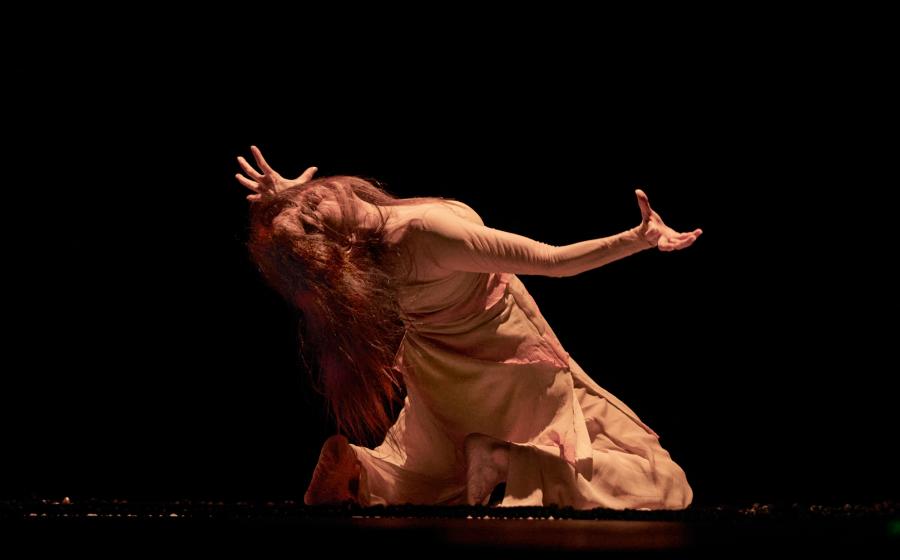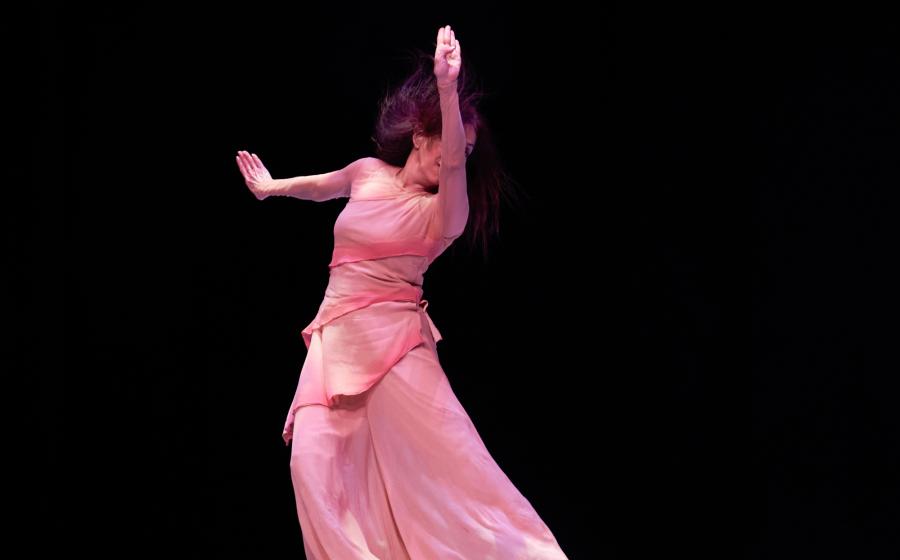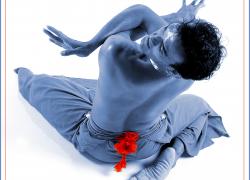Forbidden- Aditi Mangaldas
Sadlers Wells,
13 October 2023
Review by Pranav Yajnik
“I have been dancing since I was four,” said Aditi Mangaldas.
“The maturity of the late works does not resemble the kind one finds in fruit. They are for the most part, not round, but furrowed, even ravaged… they do not surrender themselves to mere delectation.” (Theodor Adorno, “Spätsstil Beethovens” (tr. Susan Gillespie) 1937).
The subject matter of Forbidden is the control and suppression of female sexual desire. It is a piece roughly split into three: innocence to awareness, knowledge to cunning, calamity to redemption.
Mangaldas begins by sketching in kathak the naturalness of sexuality, the discovery of oneself, and the unwanted coercions of society’s expectations. At least two stories are being told – the first by Mangaldas’ own body as she takes the narrative line of the piece, but a second is the story of Mangaldas’ ankle bells as the metaphor of female desire; and the two run in parallel through the piece to the end. Mangaldas dances in the first third of the programme with the bells in their proper place, and their sound is the ringing of joyous desire, unfettered until here and there she is pursued by hints of the coming control and repression from a society fearful of those it deems transgressive. These controls multiply until Mangaldas is brought up short in whichever direction she turns. So she must learn to live by their rules. But their rules stifle; she is unable to turn one way or the other, and she must be – above all things – quiet; her bells must not ring out in joy or passion or desire. In the end, comes a terrible compromise: she must surrender her bells entirely.
In this one moment, Mangaldas’ expressions pierce the audience to its bones: we are acutely aware of her reluctance to give up her bells and her hopelessness: she has no other choices left; it is a heavy, heavy price to pay. She places the bells on the stage. An echo of her sacrifice comes in a rain of bells from the ceiling, ringing with a last cry of freedom before thudding dully down onto the stage to lie there, soundless. Slowly, in an alchemic piece of lighting by Michael Hulls, the piles of bells ignite, beginning to smoulder, until they are consumed and nothing is left but cinders in ashy ghunghru-shaped mounds. It is an exquisite moment.
Later, Mangaldas, incarnate as a mummified faceless revenant, picks her way through the smoking piles of bells to adorn herself with them and begins a dance macabre, swaying mockingly under the dystopian fuchsia lights, a dance over the graves of female desire. By the time the last third of Forbidden begins, the brutalities of Mangaldas’ experiences have already harrowed us; she is wise enough to leaven this section with some lightness, but it could do with more. If it is not too much of a contradiction, the piece’s finish is powerfully ambivalent: it tilts at redemption (hope for the future?), but it is so sharp a turn after the injustices and affronts of the past hour that one cannot escape the feeling that Mangaldas does not really believe it will come.
The music is a change from the more stripped-back arrangements that Mangaldas has usually preferred. It is the first time that Nicki Wells has collaborated with Mangaldas and her musicians. Wells enlarges the dimensions of the piece with music that is at times sweeping and cinematic, while taking in modern, western and Indian classical elements. There is no feeling that the music is just there to support Mangaldas – rather it is present as an actor in its own right on the stage.
Only at the start of the piece does Mangaldas use the kathak on which she was raised. It is part of her style that she has broadened and mobilised the form to make maximum use of the huge space on which she is dancing. She dances with abandon, inhabiting each movement in full with a disinhibition that may come only with experience. For the remainder of the piece, she largely makes use of a contemporary vocabulary, eschewing the lyrical in favour of motion in rapid staccato bursts, tortuous turns and twists, movement that grounds her in the stage. It’s an awfully effective medium to deliver her message.
The idea of late style was one that was floated by critics to describe the changes in presentation that artists make as they mature, a sudden left turn in later life to discover new modes of expression. Forbidden finds Aditi Mangaldas in her early sixties, dancing with new liberty and urgency in a dense piece that is at once thought-provoking and agonising. We may be just at the beginning of a new era of her fearless exploration of dance.





















